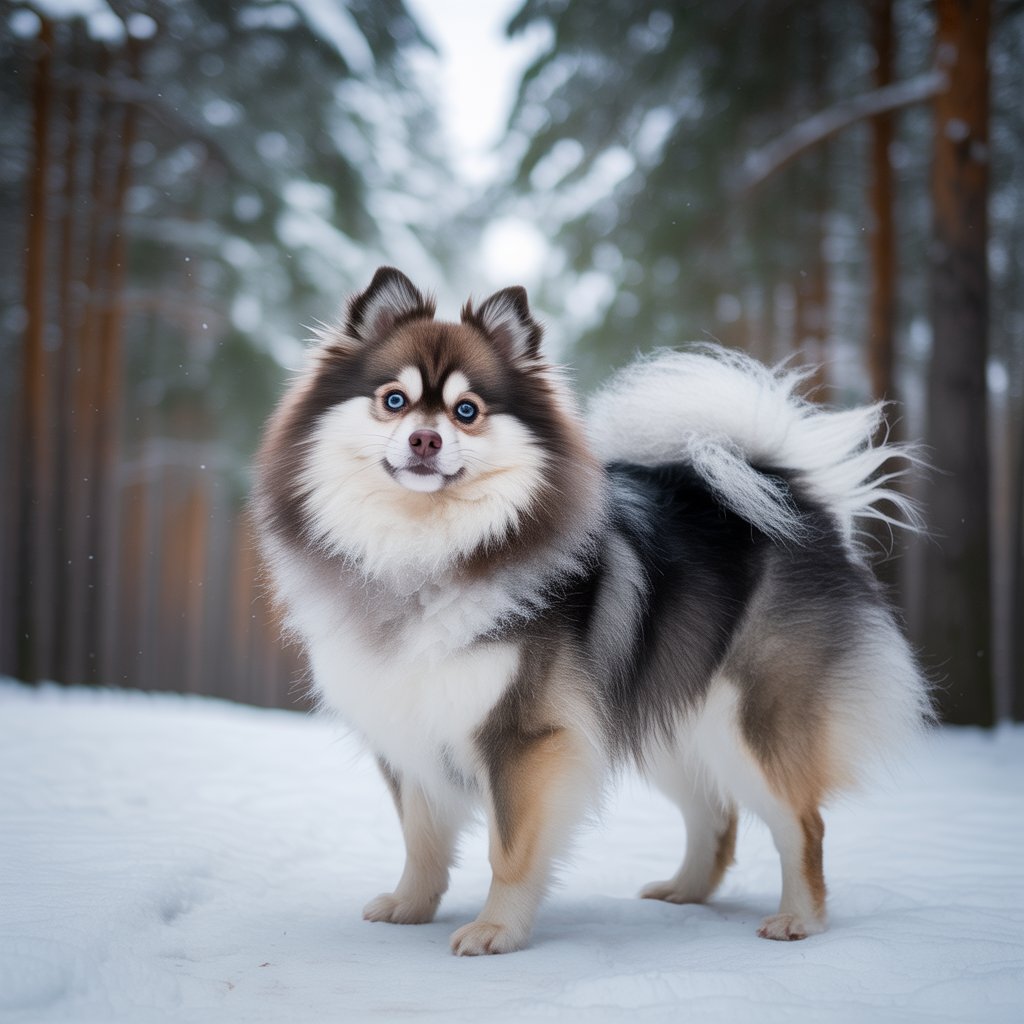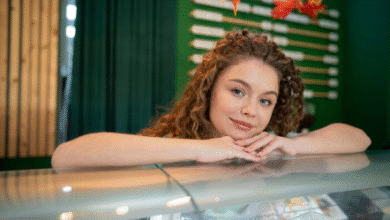The captivating world of designer dog breeds continually introduces canine enthusiasts to new and intriguing hybrids that combine the most beloved traits of two purebred parents. Among these unique crosses, the Pomerusky stands out as a particularly fascinating and visually striking companion. This hybrid, resulting from the intentional breeding of a Pomeranian and a Siberian Husky, embodies a compelling blend of the bold, vivacious spirit of a small toy breed with the majestic appearance and athletic lineage of a northern working dog. The very name “Pomerusky” evokes an image of a fluffy, fox-like creature with piercing blue eyes, a combination that captures the imagination of many potential dog owners. However, beyond its undeniable aesthetic appeal lies a complex animal with a specific set of needs, a dynamic personality, and a heritage that demands understanding and respect from anyone considering bringing one into their home. This in-depth exploration seeks to move beyond the social media glamour to provide a thorough and realistic portrait of the Pomerusky, detailing its potential physical characteristics, the intricate nuances of its temperament inherited from two strong-willed breeds, its extensive grooming and exercise requirements, and the crucial considerations for training and socialization that will determine the success of this human-canine relationship.
Heritage and Physical Characteristics: A Study in Contrasting Genetics
The Pomerusky is a testament to the unpredictable and fascinating nature of crossbreeding, as the genetic contributions of the Pomeranian and the Siberian Husky represent two vastly different canine archetypes. The Siberian Husky is a medium-sized, powerful sled dog, bred for endurance, strength, and pack work in the harshest climates, known for its thick double coat, erect ears, and often piercing blue or multi-colored eyes. The Pomeranian, by stark contrast, is a descendant of larger Spitz-type sled dogs but was selectively miniaturized over centuries to become a quintessential lap dog, prized for its luxurious fluffy coat, alert expression, and compact, toy-sized stature. This dramatic difference in size and purpose means that a litter of Pomeruskies can display extreme variation. There is no standard size or appearance; a Pomerusky could weigh anywhere from 10 to 30 pounds and may physically favor one parent dramatically over the other. Some may inherit the Husky’s leaner build and mask, while others may look like a larger, fluffier Pomeranian. The coat is typically a dense double coat that can come in a wide array of colors seen in both breeds—black, white, cream, red, sable, or a combination thereof. The eyes may be brown, blue, or even heterochromatic (one of each color), adding to their unique and often mesmerizing appearance.
Temperament and Personality: Navigating a Blend of Bold Spirits
Predicting the exact temperament of any mixed breed is an exercise in understanding probabilities rather than certainties, and the Pomerusky is a prime example of this principle. This hybrid inherits personality traits from two parents known for their intelligence, independence, and strong wills. From the Husky side, one can expect a high-energy dog with a potential for vocalization—not necessarily barking, but the howls, whines, and “talking” that the breed is famous for. Huskies are also known for their escapism skills and high prey drive, traits that can manifest in a Pomerusky. From the Pomeranian side, owners often get a dog that is fiercely loyal, alert, and often unaware of its small size, displaying a confident and sometimes bossy demeanor. The resulting Pomerusky is typically an intelligent, active, and engaging companion that forms strong bonds with its family. However, they can also be stubborn, prone to boredom, and may exhibit small dog syndrome if not properly trained and socialized. Early and consistent socialization with people, other dogs, and different environments is absolutely non-negotiable to ensure a well-adjusted adult dog that is confident rather than nervous or reactive. Their intelligence requires mental stimulation as much as physical exercise; puzzle toys and training games are essential to prevent destructive behaviors born from boredom.
Care, Training, and Lifestyle Considerations for a Thriving Pomerusky
The commitment to owning a Pomerusky extends far beyond providing food and shelter; it requires a dedicated lifestyle adjustment tailored to their specific needs. The most immediate and ongoing demand is grooming. That beautiful, dense double coat is not for the faint of heart. It requires thorough brushing several times a week to prevent mats and tangles, and during seasonal shedding periods (blowing their coat), daily brushing is essential to manage the immense amount of loose fur. Professional grooming every few months is often recommended. Secondly, exercise is a critical pillar of care. This is not a sedentary lap dog. The Husky energy demands a significant outlet. Daily long walks, vigorous play sessions in a securely fenced area, and activities like hiking or running are necessary to keep them physically fit and mentally content. A bored or under-exercised Pomerusky will quickly find its own entertainment, which usually involves chewing, digging, or vocalizing. Training a Pomerusky requires patience, consistency, and positive reinforcement techniques. Their intelligence means they learn quickly, but their independent streak can make them seem willful or stubborn. Harsh training methods will fail utterly; instead, using high-value treats, praise, and keeping sessions short and engaging will yield the best results. Crate training is highly advisable for housebreaking and providing a safe den-like space for the dog.
Conclusion
The Pomerusky is undeniably a captivating and charming hybrid that can make an extraordinary companion for the right individual or family. They offer a unique package of loyalty, intelligence, and striking beauty that is hard to resist. However, prospective owners must look beyond the adorable exterior and make a clear-eyed assessment of their ability to meet this breed’s significant demands. This is a dog that requires an active household, an owner committed to extensive grooming, and a person skilled in positive, consistent training methods. They are not a low-maintenance pet and are not well-suited for first-time dog owners or those with a sedentary lifestyle. For the dedicated individual who can provide the necessary structure, exercise, and mental engagement, a Pomerusky will repay that investment with unwavering devotion, entertaining antics, and the unique joy of sharing a life with a truly one-of-a-kind canine friend whose personality is as vibrant and dynamic as its appearance.
FAQ Section
Q1: Is a Pomerusky the same thing as a Pomsky?
A: No, this is a common point of confusion. A Pomsky is typically a first-generation cross between a Pomeranian and a Siberian Husky. A Pomerusky can refer to the same mix but is often used to describe a multi-generation dog that may have a higher percentage of Pomeranian genetics or is a mix that has been bred back to a Pomeranian. The term is less standardized than “Pomsky,” so it’s crucial to ask the breeder about the specific genetic background of the parents.
Q2: How big will a Pomerusky get?
A: There is no guaranteed size due to the significant size disparity between the parent breeds. A Pomerusky can range anywhere from 10 to 30 pounds and stand 10 to 15 inches tall at the shoulder. The size of the specific parents used in the breeding is the best indicator, though puppies can still vary widely within a single litter.
Q3: Are Pomeruskies good with children and other pets?
A: This depends heavily on the individual dog’s temperament and, most importantly, its early socialization. Their herding and prey drive instincts from both parent breeds can sometimes make them wary of very small children or quick-moving small animals like cats or rabbits. They can coexist peacefully with children and other pets if raised with them from puppyhood and taught appropriate boundaries. Supervision is always recommended.
Q4: What are the most common health issues for a Pomerusky?
A: As a mixed breed, they can be prone to health issues common in either parent breed. Potential concerns include:
-
Luxating Patella: A dislocating kneecap, common in Pomeranians.
-
Hip Dysplasia: A malformation of the hip joint, seen in Huskies.
-
Dental Issues: Pomeranians are prone to dental overcrowding and disease.
-
Eye Problems: Including cataracts and progressive retinal atrophy (PRA).
-
Skin Allergies: Common in both breeds.
Reputable breeders will conduct health screenings on the parent dogs to minimize these risks.
Q5: How much exercise does a Pomerusky really need?
A: A significant amount. While not always requiring the extreme endurance of a purebred Husky, a Pomerusky is a high-energy dog. They need at least 60 minutes of dedicated physical activity every day. This should include brisk walks, runs, or intense play sessions in a secure area. Without this outlet, they are highly likely to develop behavioral problems such as excessive barking, chewing, or digging.





